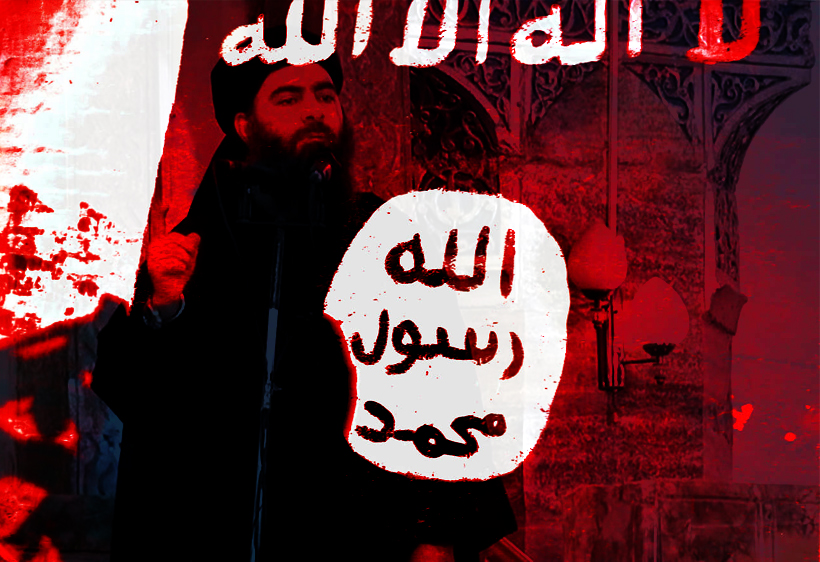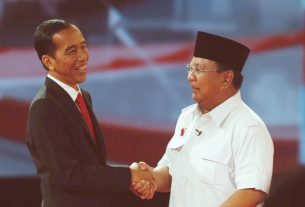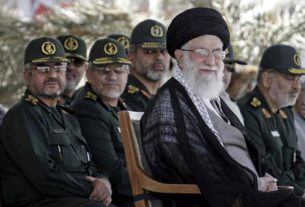Fri 22 November 2019:
On the day after Abu Bakr al-Baghdadi’s death, President Trump identified an unlikely partner in the global fight against ISIS. “Iran is right there,” he said, along with Russia, Syria, Turkey and Iraq, all of which maintain close ties with Tehran. “They all hate ISIS,” the Islamic State in Iraq and Syria.
It’s a familiar refrain. During the 2016 presidential campaign, Trump argued that Iran, along with Syria and Russia, has played a positive role in combating the terrorist group. “I don’t like Assad at all, but Assad is killing ISIS,” he said. “Russia is killing ISIS. And Iran is killing ISIS.”
The Obama administration adopted a similar view. In 2014, as nuclear negotiations with Tehran proceeded in earnest, Obama sent a letter to Iran’s supreme leader, Ayatollah Ali Khamenei, that floated the possibility of U.S.-Iranian cooperation to defeat ISIS if the two could reach a nuclear agreement. “The fact is,” Secretary of State John Kerry told the UN Security Council, “there is a role for nearly every country in the world to play, including Iran,” in defeating ISIS.
But that is like hiring the arsonist to put out the fire.
Iran’s efforts to achieve hegemony in the Middle East have entailed the brutal suppression of Sunni Arab populations. In Syria, the relentless atrocities of the Assad regime reflected those of ISIS itself. In Iraq, a pro-Tehran government marginalized Sunni Arabs and persecuted their leaders. So long as Iran’s expansionist policies remain unchecked, terrorists like Baghdadi will exploit the Sunni-Shiite conflicts that Tehran specializes in fueling.
It didn’t have to be this way. After the fall of Saddam Hussein in 2003, Iran-backed Shiite forces began to infiltrate and co-opt the new government, enabling Tehran to exert substantial influence in Baghdad. In response to the massacres of Shiites by Sunni insurgents, the Shiite militias unleashed death squads of their own and planted roadside bombs that killed hundreds of U.S. soldiers. Fortunately, the surge of U.S. forces in 2007, coupled with a new counterinsurgency strategy, gave Iraq a second chance to overcome its divisions. But the Obama administration’s hasty withdrawal of troops in 2011 reversed this progress, resulting in another downward spiral of sectarianism.
The U.S. completed its exit from Iraq only months after the onset of Syria’s civil war, which not only created another haven exploited by ISIS but also spurred Iran’s military intervention to save the Assad regime. Iran opposed ISIS in Syria but was more concerned with other rebel groups, both secular and Islamist, that posed a more immediate threat to Assad. Meanwhile, Assad’s brutality — about which Iran had no qualms — led Syria’s Sunni population to cooperate with ISIS and other extremists as a desperate means of self-preservation.
But that reality was lost on President Obama — and President Trump has failed to learn from his predecessor’s mistakes.
Some former members of Obama’s administration have distanced themselves from Obama’s approach. “ISIS was primarily the result of the vacuum in Syria caused by Assad, first and foremost, aided and abetted by Iran and Russia,” Hillary Clinton told CNN in 2016. Likewise, in a 2015 speech, Clinton noted, “We cannot view Iran and ISIS as separate challenges.”
Iran bears “much responsibility” for the rise of ISIS, wrote Robert Ford, Obama’s former ambassador to Syria, in 2015. The United States “can’t ally with the very Iranian-backed forces generating Sunni Arab resentment, even if the Iranians are also fighting the jihadis. The Iranians, after all, fight to secure Shia dominance, not power-sharing.”
In 2015 congressional testimony, Ford urged lawmakers “to remember the original context” for the rise of ISIS — “aggrieved Sunni Muslim communities in places like Lebanon, Syria and Iraq who are angry at and afraid of Iran and the Arab Shia. If we ally with Iran against the Islamic State, directly or indirectly, we play into the Islamic State’s narrative and will help its recruitment.”
This warning remains all the more relevant in light of Trump’s recent decision to abandon the Syrian Kurds, who played a pivotal role in dismantling the ISIS caliphate. If Trump lets Iran and other hostile powers like Russia and Turkey do as they wish in Syria, he risks creating the same dynamic that Obama’s withdrawal from Iraq created in 2011. Both Iran and a resurgent ISIS are likely to fill the void created by an American retreat, further destabilizing the region.
Iran may resent ISIS, but crushing it is not a priority for Tehran. Nor has Iran learned that its preferred methods for dealing with opponents are precisely what led to the rise of the caliphate.
If Trump is serious about defeating radical Sunni Islamists who loathe the West as much as they do their regional enemies, then he needs to recognize who America’s friends and enemies are. The Islamic State grew out of a sectarian war that Tehran has backed. If Washington fails to check Iran, Sunni jihadism is likely to endure.
Tzvi Kahn is a senior Iran analyst at the Foundation for Defense of Democracies. Follow him on Twitter @TzviKahn. FDD is a Washington, DC-based, nonpartisan research institute focusing on national security and foreign policy.
-Article Originally published in The Hill
The statements, views and opinions expressed in this column are solely those of the author and do not necessarily represent those of Independent Press.
Think your friends would be interested? Share this story!





